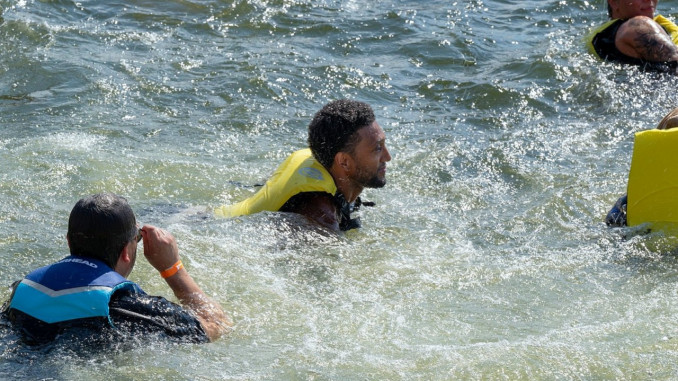
It’s no secret that Baltimore has seen its share of water quality crises in the past few years. In 2021, hundreds of fish and other aquatic life in the Jones Falls were killed by pollution from a vinegar factory. The next year, two major wastewater plants were shown to be illegally discharging untreated sewage into the harbor. During both September 2022 and September 2023, residents were faced with dangerous levels of parasites in the city’s drinking water.
Yet the city has also invested more than $1 billion in sewer improvements, installed several eye-catching “Trash Wheel” litter collectors, and performed regular water quality monitoring across the city’s waterways—resulting in the recent announcement that the harbor is safe for swimming in certain locations and conditions. As a demonstration of the city’s confidence in the water quality improvements, 150 people were invited to swim in the Inner Harbor at a highly publicized event. Residents who joined in were delighted to show their enthusiasm for a swimmable harbor.
Before entering the water, Mayor Brandon Scott gave a press conference celebrating the milestone, and later posted photos of participants that included real estate developer David Bramble, the director of the controversial Inner Harbor redevelopment. Bramble explained to the press that “clean water is ‘inextricably connected’ to the appeal of his proposed apartment, retail and office complex.” But, in the press conference, Mayor Scott and others admitted that much of the time the water still doesn’t meet Maryland’s water-quality standards, necessary safety infrastructure doesn’t exist yet, and it’s still illegal to jump into the water from the promenade that surrounds much of the harbor, including those areas that focus on recreation.
The Inner Harbor swim event was carefully positioned in water too deep for participants to touch the bottom. While the water itself may be somewhat safer, toxic chemicals remain buried in the sediment from historic pollution during Baltimore’s industrial peak. Bramble and other developers now see a new source of profit to be made from a cleaner harbor.
Recent improvements are a cause for recognition of some progress. But water quality in Baltimore is still a serious issue. Baltimore residents deserve a healthy, safe environment that we are encouraged to enjoy. Let’s strive to celebrate clean water on our own terms instead of a PR event for the mayor and his wealthy business friends.




